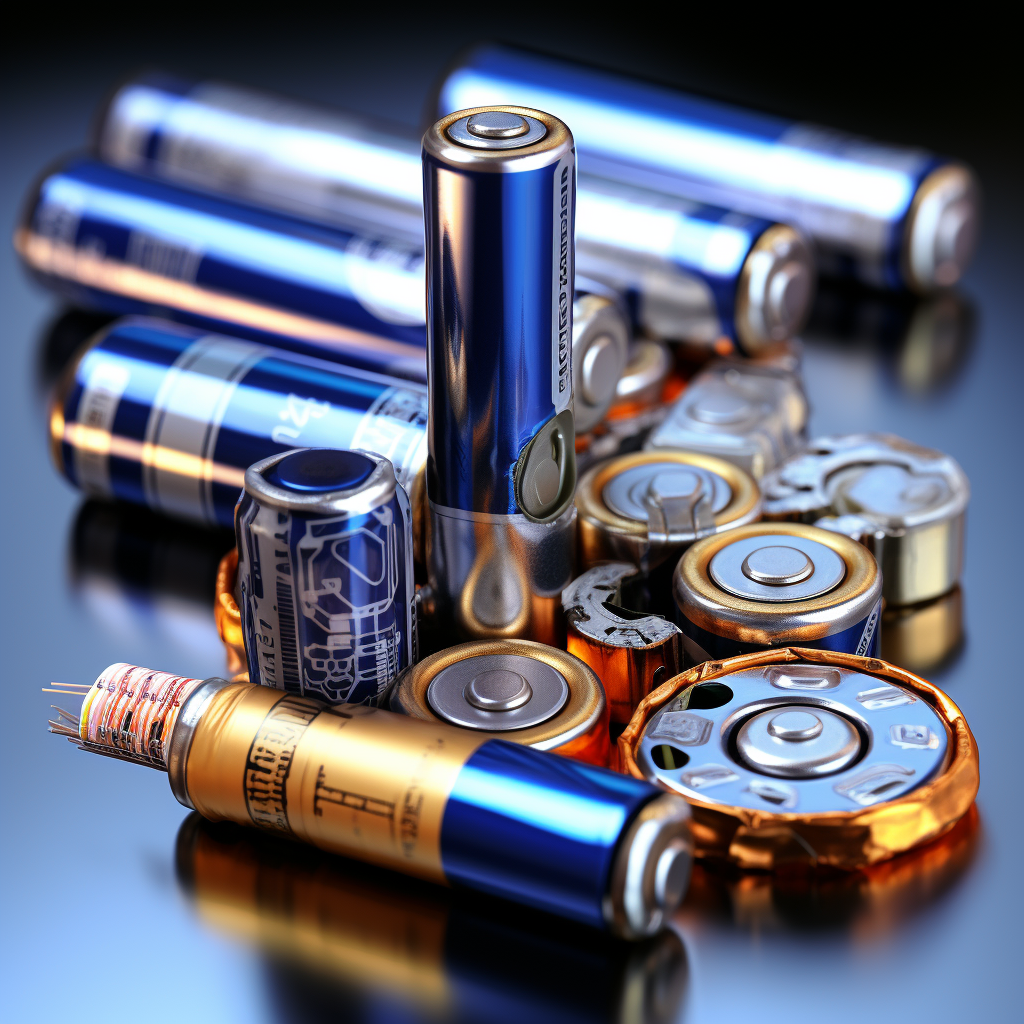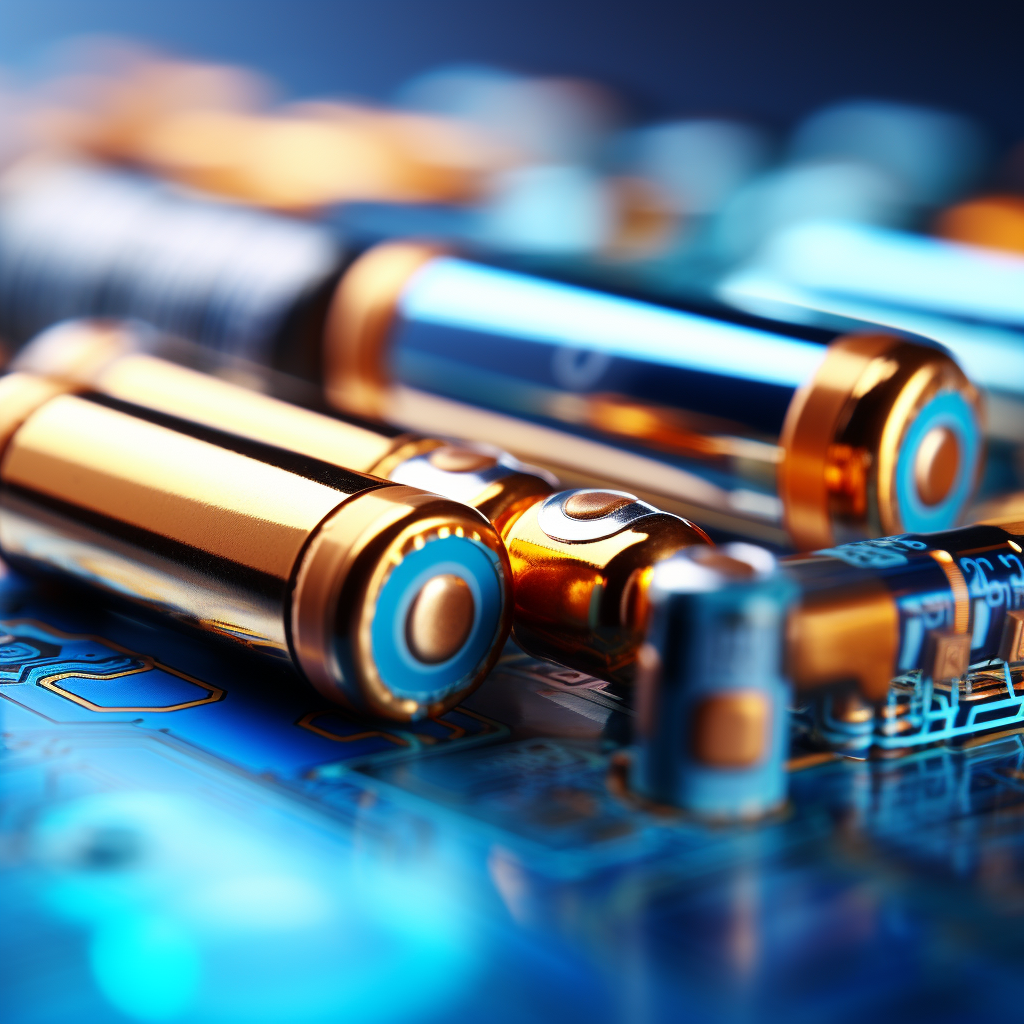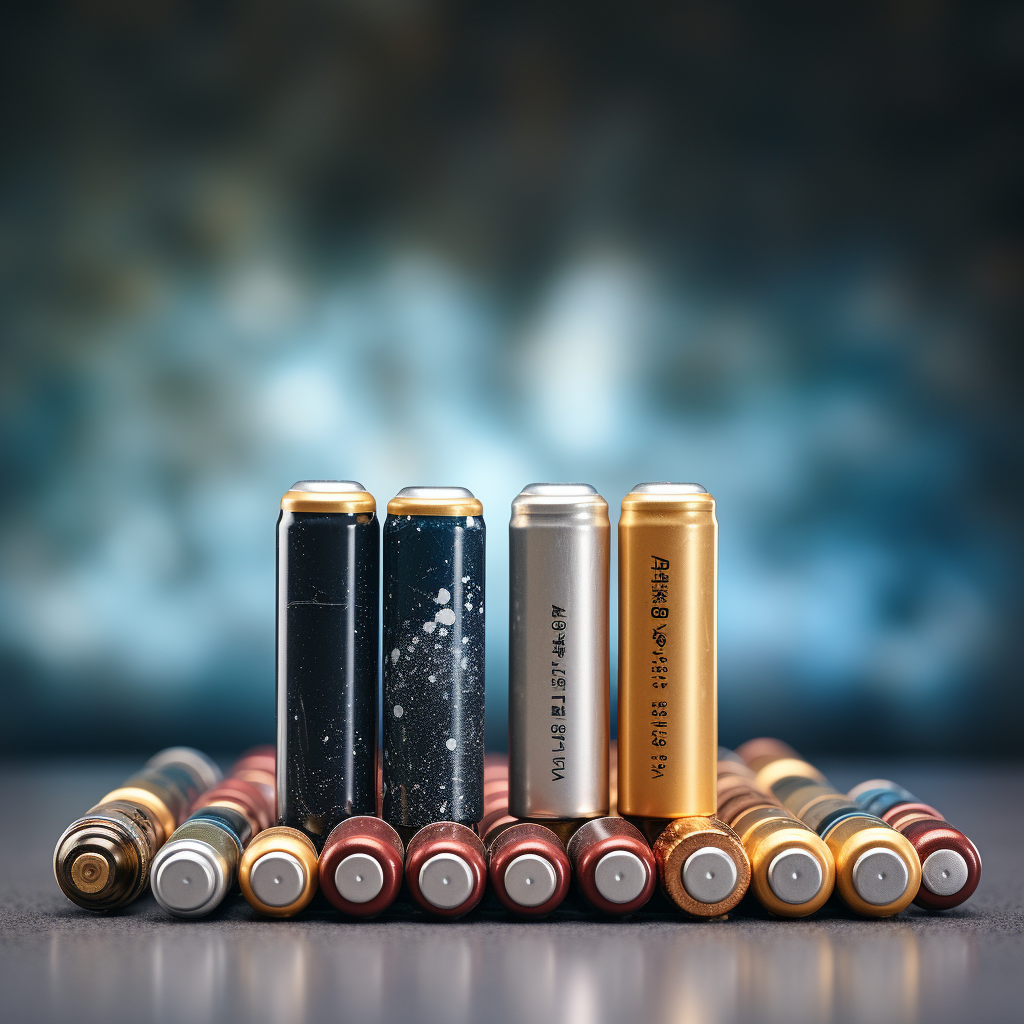Contents
In today’s high-tech world, the demand for energy storage devices has never been greater. From powering your smartphone to enabling electric vehicles and even stabilizing entire power grids, the need for efficient, durable, and sustainable ways to store energy is a challenge that scientists and engineers are constantly grappling with. Two key players in this realm are batteries and supercapacitors.
While batteries are quite ubiquitous and form the backbone of small to large-scale energy storage, supercapacitors are a less common but increasingly important technology. Despite their differences, these two types of energy storage devices are often confused or misinterpreted.
What is a Battery?
2.1 Composition and Structure
A battery is essentially a device that stores energy in a chemical form and converts it into electrical energy when needed. At its core, a battery comprises three main components:
- Anode: The negative electrode where oxidation takes place.
- Cathode: The positive electrode where reduction occurs.
- Electrolyte: A substance that allows for the flow of ions between the anode and the cathode.
These components are housed within a casing that prevents leakage of material and serves as a protective layer.
2.2 How Batteries Work
The operation of a battery is governed by electrochemical reactions between the anode, cathode, and electrolyte. When a battery is connected to a circuit, the anode releases ions into the electrolyte, which travel to the cathode. This flow of ions creates an electrical current that can power electronic devices or be stored for future use.
2.3 Types of Batteries
Batteries come in various shapes and sizes, tailored for specific applications. Here are some of the most common types:
- Alkaline Batteries: Widely used in household applications like remote controls and flashlights. They have a high energy density and long shelf life but are generally not rechargeable.
- Lithium-ion Batteries: Dominant in consumer electronics and electric vehicles. These batteries offer high energy density and are rechargeable but can be sensitive to high temperatures.
- Lead-acid Batteries: Often used in automotive and industrial settings, these are known for their durability but have lower energy density compared to Lithium-ion batteries.
- Nickel-Metal Hydride (NiMH): Common in hybrid vehicles and some older mobile phones, these are less sensitive to temperature changes but have a slightly lower energy density than Lithium-ion batteries.
It’s crucial to choose the right type of battery based on the requirements of the application, whether that be high energy density, quick charging, or temperature stability. Each type has its unique features, advantages, and limitations, making the selection a task that requires a nuanced understanding of the specific needs of a given application.

What is a Supercapacitor?
3.1 Composition and Structure
Unlike batteries, which rely on chemical reactions to store and release energy, supercapacitors store energy physically through the electrostatic separation of charges. A supercapacitor is typically made up of:
- Two Electrodes: Often made from porous carbon material that provides high surface area for storing charges.
- Electrolyte: Similar to batteries, supercapacitors also use an electrolyte to allow ions to move between electrodes.
- Separator: A porous material that keeps the two electrodes apart to prevent a short circuit but allows ions to pass through.
These components are generally packed in a cylindrical or rectangular casing, much like batteries, but the resemblance is only superficial.
3.2 How Supercapacitors Work
In a supercapacitor, when a voltage is applied across the electrodes, ions in the electrolyte move to the surface of each electrode, creating a double layer of opposite charges. This “double layer” acts as a storage medium for electrical energy. The energy is released when the voltage is removed, allowing the ions to redistribute back into the electrolyte, thus completing the circuit and enabling a device to do work.
3.3 Types of Supercapacitors
Supercapacitors can be broadly categorized into three types:
- Electric Double Layer Capacitors (EDLCs): These are the most common type, often used in memory backup and power stabilization applications.
- Pseudocapacitors: Utilize a small amount of fast, reversible electrochemical charge transfer at the electrode surface, making them useful in high-power applications.
- Hybrid Capacitors: Combines the characteristics of EDLCs and pseudocapacitors to provide both high energy density and high power density, making them versatile for a range of applications.
The type of supercapacitor you might choose depends on your specific needs, be it rapid charge/discharge, high energy storage, or a balance between the two.
The science behind supercapacitors is rapidly evolving, promising a future where they could play a more prominent role in energy storage and distribution systems.

Key Differences Between Batteries and Supercapacitors
Understanding the distinctions between batteries and supercapacitors can help us make more informed choices, whether for personal use or industrial applications. Here are some of the key differences:
4.1 Energy Density
Batteries: Generally, batteries offer higher energy density, which means they can store more energy for a given volume. This makes them suitable for applications that require long-term energy storage, such as mobile phones and electric vehicles.
Supercapacitors: On the other hand, supercapacitors have lower energy density. They can’t hold as much energy per unit volume, which limits their use in applications that need sustained power for extended periods.
4.2 Charge/Discharge Speed
Batteries: The electrochemical reactions in batteries take time, resulting in slower charge and discharge rates. This is often not an issue for many applications but can be a limitation where rapid energy transfer is needed.
Supercapacitors: One of their standout features is their ability to charge and discharge almost instantaneously. This makes them perfect for applications that require quick bursts of energy, such as in regenerative braking systems in electric vehicles.
4.3 Longevity
Batteries: The chemical reactions that take place during the charge/discharge cycles in batteries lead to degradation over time. As a result, most batteries have a finite lifespan, after which their capacity to hold charge diminishes significantly.
Supercapacitors: Due to their physical method of storing energy (as opposed to chemical), supercapacitors are more robust and can endure many more charge/discharge cycles than batteries, often up to millions of cycles.
4.4 Applications
Batteries: Given their higher energy density and slower discharge rates, batteries are more suited for applications that require sustained power over extended periods, such as laptops, mobile phones, and electric cars.
Supercapacitors: Their quick charge/discharge capability and longevity make them ideal for applications that require rapid energy transfer but not necessarily long-term storage, like in emergency power backups or quick acceleration in vehicles.
Understanding these key differences can guide your decision when selecting an energy storage solution that best fits your needs. Both technologies have their strengths and weaknesses, but ongoing advancements promise to expand their capabilities and applications.

Advantages and Disadvantages
Making an informed decision about whether to use a battery or a supercapacitor in a given application often comes down to weighing their respective pros and cons. Below, we explore the advantages and disadvantages of each.
5.1 Batteries
Advantages:
- Higher Energy Density: Batteries can store more energy per unit volume, making them ideal for applications that require sustained energy output.
- Versatility: With numerous types available, batteries can be tailored for specific applications, ranging from portable electronics to grid energy storage.
- Mature Technology: Batteries have been around for a long time, meaning they’re well-understood, widely available, and relatively inexpensive for their capabilities.
Disadvantages:
- Slow Charge/Discharge: The electrochemical reactions in batteries limit the speed at which they can be charged or discharged.
- Limited Lifespan: Chemical degradation over time shortens the battery’s life, necessitating replacement or refurbishment.
- Sensitivity: Some types, like lithium-ion batteries, can be sensitive to high temperatures, posing risks like thermal runaway, which can lead to fires or explosions.
5.2 Supercapacitors
Advantages:
- Fast Charge/Discharge: Supercapacitors excel in their ability to charge and discharge almost instantly.
- Longevity: They can endure millions of charge/discharge cycles, outlasting batteries significantly.
- Temperature Resilience: Generally less sensitive to temperature fluctuations, supercapacitors can operate efficiently in a broader range of conditions.
Disadvantages:
- Lower Energy Density: Their main drawback is their inability to store as much energy as batteries, limiting their applicability in long-term energy storage scenarios.
- Cost: High-quality supercapacitors can be expensive, especially when considering the energy storage capacity per dollar.
- Size: Due to lower energy density, a larger volume of supercapacitors may be needed to achieve the same energy storage as a battery, which could be a limitation in space-constrained applications.
These advantages and disadvantages are not set in stone; ongoing research and technological advancements are continually shifting the landscape. However, knowing the current strengths and weaknesses of each can guide you in choosing the most effective energy storage solution for your specific needs.
Emerging Technologies and Future Trends
As we look to the future, both batteries and supercapacitors are subjects of intense research and development. Advances in these technologies could significantly impact various sectors, from consumer electronics to renewable energy and transportation. Let’s delve into some of the emerging trends and technologies in this space.
6.1 Batteries
- Solid-State Batteries: These batteries use a solid electrolyte instead of a liquid one, promising higher energy densities, faster charging, and increased safety. Automotive giants like Toyota and tech companies like Samsung are heavily investing in this technology.
- Silicon Anodes: Traditional lithium-ion batteries use graphite anodes, but switching to silicon can dramatically increase capacity. The challenge lies in managing silicon’s expansion and contraction during charging, which researchers are addressing.
- Flexible and Wearable Batteries: As wearable technology becomes more prevalent, the need for flexible, lightweight batteries grows. Advancements in materials science are paving the way for batteries that can be bent or rolled without losing functionality.
6.2 Supercapacitors
- Graphene Supercapacitors: The use of graphene, a one-atom-thick layer of carbon atoms, could drastically increase the surface area of supercapacitor electrodes, thereby multiplying their energy storage capabilities.
- Organic Electrolytes: Researchers are exploring organic materials as a replacement for traditional electrolytes, aiming to make supercapacitors more eco-friendly and sustainable.
- IoT Applications: The rapid charge/discharge cycles and longevity of supercapacitors make them particularly well-suited for Internet of Things (IoT) devices, which often require quick bursts of energy.
6.3 Converging Technologies
Interestingly, there’s a trend towards merging the strengths of batteries and supercapacitors to create hybrid systems. These systems aim to capitalize on the high energy density of batteries and the fast charge/discharge capabilities of supercapacitors, offering a balanced solution for complex energy needs.
As we navigate the challenges of global energy sustainability, these emerging technologies and trends promise transformative changes. By staying updated on these advancements, we can make better decisions today and pave the way for a more sustainable and efficient future.
Frequently Asked Questions (FAQs)
- What is the main difference between a battery and a supercapacitor?
The main difference lies in how they store energy. Batteries store energy through chemical reactions, while supercapacitors store energy physically through the separation of charges. - Which has a higher energy density, batteries or supercapacitors?
Batteries generally have higher energy density, allowing them to store more energy for a given volume, making them ideal for long-term energy storage needs. - Are supercapacitors faster at charging than batteries?
Yes, supercapacitors can charge and discharge almost instantaneously, making them suitable for applications that require quick bursts of energy. - What are the primary applications for batteries?
Batteries are widely used in portable electronics, electric vehicles, renewable energy storage, and other applications requiring sustained, long-term energy output. - What are the primary applications for supercapacitors?
Supercapacitors are often found in industrial machinery, emergency power backups, and regenerative braking systems in vehicles, where quick energy transfer is essential.



2 comments
[…] They are emblematic of the progress that has been made in the field, propelling lithium batteries into a new era marked by unprecedented reliability and […]
[…] spectrum of batteries manufactured in China is broad, encompassing lithium-ion, lead-acid, nickel-metal hydride, and […]